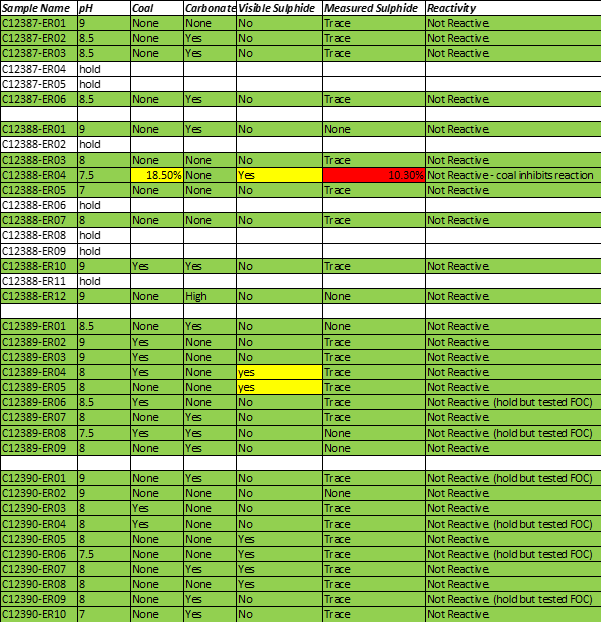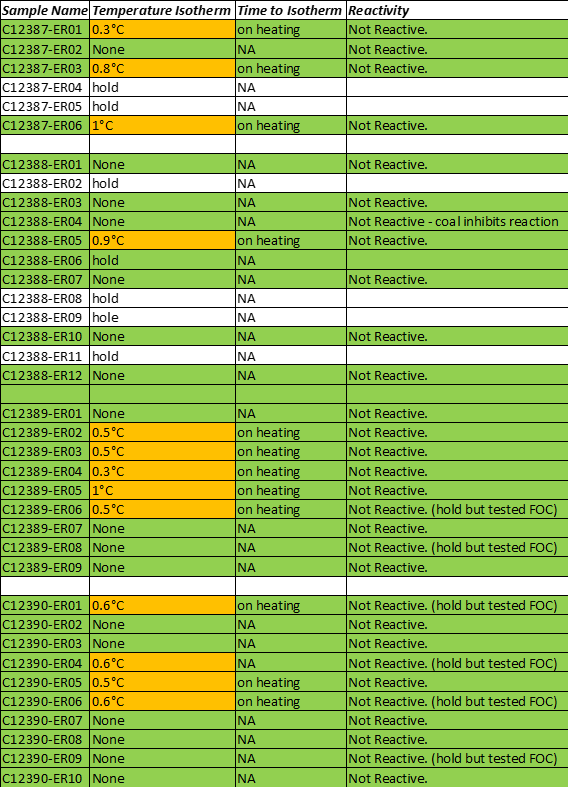Results
Table 1 Results for Testing using QMR Reactive Ground Test
Table 2 Results for Testing using AEISG Code of Practice
Prior to testing as per the AEISG Code of Practice each sample was assessed for reactivity risk based on pH, carbonate and the amount of reactive sulphide and coal using the QMR Reactive Ground Test (refer to Table 1 and Table 2 for results of both tests). Three samples contained visible pyrite (refer to Figure 1 and Figure 2). All samples except one had trace or no reactive sulphide. The samples that contained trace sulphide gave up to a 1°C temperature isotherm on heating when tested as per the AEISG Code of Practice, which is considered as not reactive. The sample that contained 10.3% reactive sulphide also contained 18.5% coal which inhibited a reaction between the sulphide and nitrate when tested as per the AEISG Code of Practice
Figure 1-Sample C12388-ER04 showing clumps of visible pyrite
Figure 2- Samples C12389-ER04 and C12389-ER05 contained a fine layer of
visible pyrite
Conclusion:
All samples were found not to be reactive when tested as per the AEISG Code of Practice and the QMR Reactive Ground Test.
Assessed By:
Dr G. Cavanough
Date:
12th August 2022
Data Files:
AEISG Temperature Logs:
C12388-ER04 AEISG Repeat.xlsx
Rollestone AEISGa.xlxs
Rollestone AEISGb.xlxs
Rollestone AEISGc.xlxs.
QMR Reactive Ground Test results tables and audited temperature logs:
Rga18.xlxs
templog16.xlxs
Rga19.xlxs
templog17.xlxs
rga20.xlxs
templog18.xlxs
Tables of all test results (sorted):
All results.xlxs






